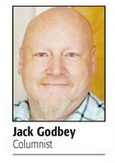SCOOP: What’s the buzz about pollinators?
Published 8:50 am Friday, July 28, 2017
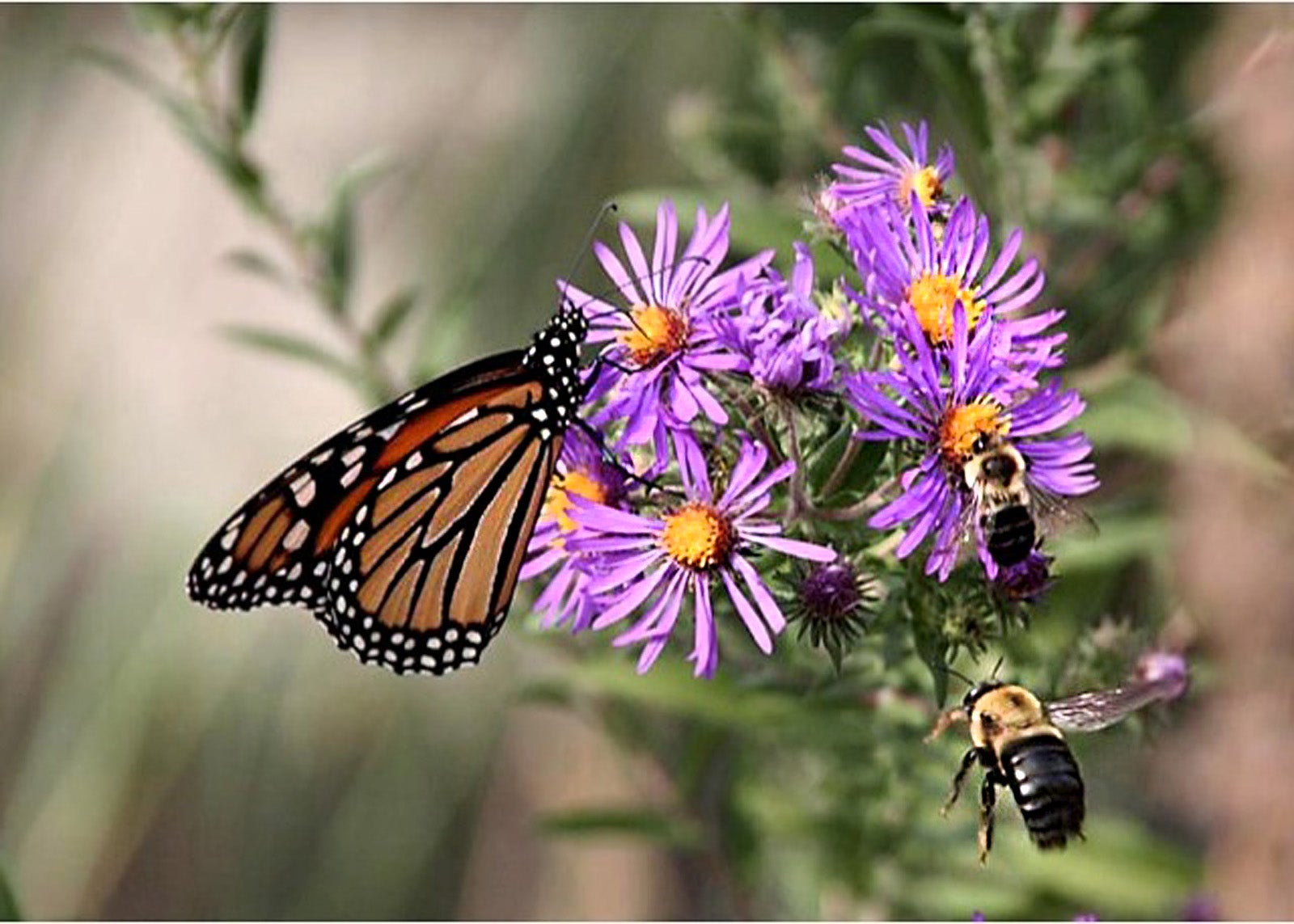
- Betty Hall Photography Pollinators like butterflies, bees, flies, and hummingbirds are essential to 75 percent of flowering plants, including food crops. Gardeners can help by planting a variety of flowers and avoiding pesticides.
By Linda Porter and Susan Jonas
Garden Club of Danville
A puzzled gardener asked the Garden Club’s Linda Porter for advice. She was proud of her patio garden with its healthy green tomato plants but mystified that, after fertilizing, watering and pampering her plants, she did not have clusters of tomatoes hanging from every branch. “What’s wrong?” she asked. “Only a few of the blossoms turn into tomatoes.”
One solution to this mystery was as close as her mostly green backyard of boxwoods and grass where no bees buzzed and no butterflies fluttered. Her tomatoes needed pollinators and pollinators need flowers. At least 75 percent of all flowering plants, including tomatoes, depend on pollinators. Bees, butterflies, flower flies, and hummingbirds come to your yard for different reasons; they will stay only if you meet their needs for pollen and nectar.
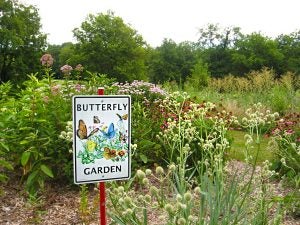
Photo by Susan Jonas
The large butterfly garden at the Beaumont Inn in Harrodsburg is in its glory this summer. Pollinators attracted to the flowers also pollinate the inn’s extensive vegetable beds.
Another call for help came in 2015 from Helen Dedman at the Beaumont Inn in Harrodsburg. Helen had planted a large pollinator garden next to the inn’s extensive vegetable garden and it wasn’t doing well. Some flowers were thriving but others languished or died. Over the course of two summers, Linda advised Helen on plant choices and placement, according to varying conditions of the site. This year the garden is finally in its glory, attracting the insects and hummingbirds that will pollinate the vegetables.
We need pollinators to survive. One of every three bites of food you eat is there because of pollinators, and they need our help. According to Pollinator Partnership, “pollinator populations are changing. Many are in decline, mostly because of a loss in feeding and nesting habitats. Pollution, misuse of chemicals, disease, and changes in climatic patterns are all contributing to shrinking and shifting pollinator populations.” This spring the Rusty Patched Bumblebee was officially declared endangered. Others species are threatened or in decline.
The Kentucky Department of Agriculture is asking Kentuckians to help protect this vital living resource. State Apiarist Tammy Horn Potter, along with other public and private agencies, has worked for the past two years to develop a new Kentucky Pollinator Protection Plan. The plan outlines ways universities, farmers, developers, state agencies, public utilities, pesticide applicators, conservationists, parks, gardeners, and beekeepers can help protect pollinators. These groups all contributed their thoughts and knowledge to the plan. Garden Club of Danville members Linda Porter and Joanna Kirby represented The Garden Club of Kentucky. (An online guide to protecting pollinators is available at https://www.kyagr.com/statevet/documents/Kentucky-Pollinator-Handbook.pdf)
How can you help? First, plant a garden with a variety of flowers, vegetables, fruits, shrubs, and flowering trees, including some native plants that have sustained pollinators for centuries. Different pollinators are attracted to different colors, shapes, and fragrances of flowering plants. The greater the variety, the more pollinators you will see. The risk of a sting is very small. It’s safe to get close to foraging bees as long as you don’t threaten or squish them, or get them tangled in your clothes.
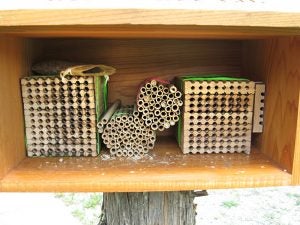
Photo by Susan Jonas
Houses for mason or orchard bees can be purchased on the internet, in some garden centers, or you can make you own. The bees will lay one egg in each tube and seal it with mud.
Second, provide a habitat for pollinating visitors, especially bees, by far the most important. If you can’t become a honey beekeeper, you can attract other bees. Mason and orchard bees are tiny native bees that are twice as efficient as honeybees in pollinating flowers, fruits and vegetables. They search for small holes located in trees or posts. A single egg is laid in each hole, then filled by the bee with pollen for larva food and sealed with mud. In spring, the new bees drill free and emerge in search of more pollen and nectar. Directions for making mason bee houses can be found on the Internet or at the library. Bumblebees are also in trouble, in part due to loss of habitat. Their nests are built in the ground near old logs or under shrubs. Leaving some areas free of vegetation will encourage these important pollinators to find a home in your yard. (The mason bee is not the same as the dreaded wood bee that drills holes in your deck or house.)
Third, minimize your use of pesticides and, if you must use them, follow all label directions. Avoid all systemic insecticides, such as neonicotinoids, that remain in the plant to kill butterfly caterpillars and damage other pollinators.
Finally, spread the word about the importance of saving our pollinators. Working together we can make a difference. For a list of favorite native flowering plants for pollinators click on the Resources tab at www.thegardenclubofdanville.org.
Linda Porter is the Butterfly and Pollinator Chair for the Garden Club of Kentucky.
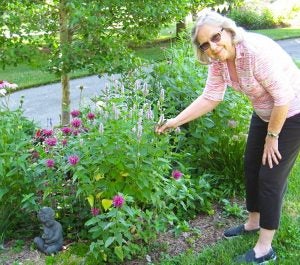
Photo by Susan Jonas
In her own front yard, Linda Porter has planted islands of shrubs and flowers in many varieties, providing abundant habitat and food for pollinators while creating a beautiful setting for her home.
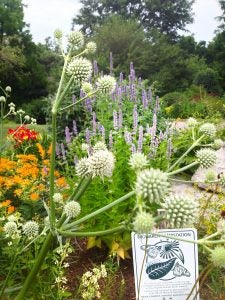
Photo by Linda Porter
Linda Porter’s pollinator landscaping includes this colorful bed. In front is the distinctive rattlesnake master, with its “golf ball” flowers. Others include butterfly milkweed, anise hyssop, whorled milkweed, and red daylilies in the rear.


